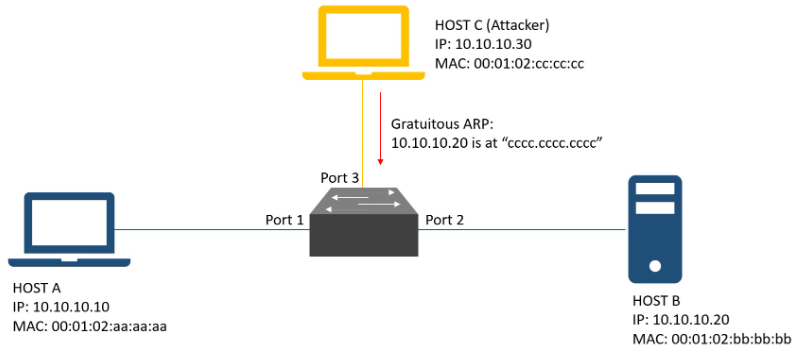Dynamic ARP Inspection: Schutz von Netzwerken vor Man-in-the-Middle-Angriffen
In der sich ständig weiterentwickelnden Landschaft der Netzwerksicherheit sind der Schutz der Datenintegrität und die Verhinderung unbefugten Zugriffs von entscheidender Bedeutung. Ein kritischer Aspekt der Netzwerksicherheit ist die Sicherstellung der Authentizität der Address Resolution Protocol (ARP)-Kommunikation. Dynamic ARP Inspection (DAI) ist eine robuste Sicherheitsfunktion, die entwickelt wurde, um die mit ARP-Spoofing und anderen böswilligen Aktivitäten verbundenen Risiken zu minimieren. Dieser Aufsatz befasst sich mit der Funktionsweise, den Vorteilen und der Implementierung von DAI und hebt seine Rolle bei der Stärkung der Netzwerkabwehr hervor.
ARP und seine Schwachstellen verstehen
Das Address Resolution Protocol (ARP) ist für die Netzwerkkommunikation von grundlegender Bedeutung, da es Geräten ermöglicht, IP-Adressen ihren entsprechenden MAC-Adressen zuzuordnen. Diese Zuordnung ist unerlässlich, damit Datenpakete ihre beabsichtigten Ziele innerhalb eines lokalen Netzwerks erreichen können. ARP ist jedoch von Natur aus anfällig für Spoofing-Angriffe, bei denen böswillige Akteure gefälschte ARP-Nachrichten senden, um ihre MAC-Adresse mit der IP-Adresse eines legitimen Geräts zu verknüpfen. Diese Täuschung kann zu „Man-in-the-Middle“-Angriffen führen, bei denen der Angreifer die zwischen zwei Geräten übertragenen Daten abfängt und möglicherweise verändert.

The Role of Dynamic ARP Inspection
Dynamic ARP Inspection (DAI) is a security mechanism that addresses the vulnerabilities of ARP by validating ARP packets within a network. DAI operates by intercepting, logging, and discarding ARP packets that do not match the expected MAC-to-IP address bindings. This validation process is crucial in preventing unauthorized devices from masquerading as legitimate network participants.
DAI relies heavily on DHCP snooping, another security feature that monitors DHCP message exchanges and maintains a database of valid MAC-to-IP address bindings. When DAI is enabled, it cross-references incoming ARP packets against the DHCP snooping table. Any ARP packet that does not align with the information in the DHCP snooping database is considered invalid and is subsequently dropped. This stringent verification process ensures that only legitimate ARP communications are allowed, significantly reducing the risk of ARP spoofing attacks.
Benefits of Dynamic ARP Inspection
The primary benefit of DAI is its ability to protect networks from ARP spoofing attacks. By ensuring that only legitimate ARP packets are allowed, DAI prevents attackers from intercepting and manipulating network traffic. This protection is particularly important in environments where sensitive data is transmitted, such as financial institutions, healthcare facilities, and government agencies.
In addition to enhancing security, DAI also provides valuable logging and monitoring capabilities. Network administrators can review logs of intercepted ARP packets, gaining insights into potential security threats and identifying devices that may be attempting to engage in malicious activities. This visibility enables proactive security measures and helps maintain the overall integrity of the network.
